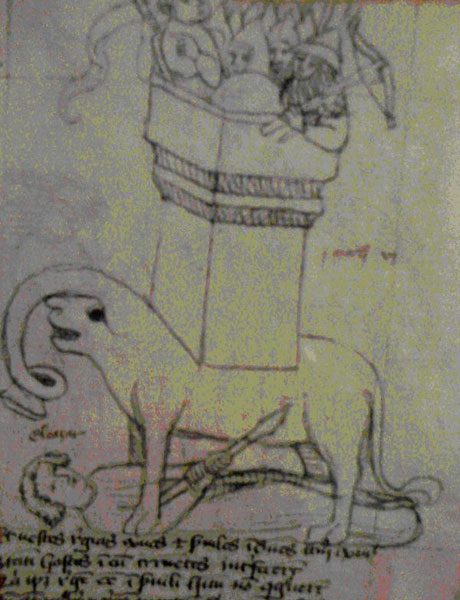
In the winter of 218 B.C., mounted on elephants, Hannibal and his army made their famous march from the Iberian peninsula across the Alps and into what is now known as Alto Adige (South Tyrol), Italy. Near the Po River, they surprised and conquered the Roman army.
In 1142, at 1,800 feet above sea level in the pass where those elephants had wound their way through the mountains, an Augustinian bishop established a monastery, the Abbazia di Novacella, and planted grape vines for its religious, medical, and dietary needs. After providing hospitality to Christian pilgrims en route to the Holy Land throughout the Middle Ages, these monks somehow survived the secularization of the region during Napoleon’s wars of empire, and the predations of Mussolini and Hitler before and during World War II.
While ownership of this region has changed multiple times between Austria, France, and Italy, the monks of the Abbazia di Novacella (www.abbazianovacella.it) have successfully supported themselves there for eight and a half centuries.
When I visited the abbey on a trip to the region in mid-May, I expected to see the monks carefully tending their vineyards, making herbal concoctions, or tending fruit trees, as some monks do. But these monks do no physical labor; they follow the late works of St. Augustine, a fourth century Catholic priest who resolved his own religious ambiguity (“Grant me chastity and continence, but not yet”) when he heard God command him to “take up and read,” and spent the rest of his days studying religion and philosophy.
The library at Novacella, where the monks read when they are not praying, is a virtual cathedral of learning, a gilded Baroque hall with a vast collection of volumes both sacred and secular.
The monks, as pastors and teachers, have always found parishioners to support them. In medieval times, the nobility exchanged wealth for prayers and indulgences, attempting to purchase an assurance of entry into heaven. Peasants would do physical work for the same reason. Today’s Catholic Church no longer sells indulgences or conscripts labor; at Novacella the 26 remaining monks are guided by an impressively modern capitalist business model, complete with mission statement: “enterprises [are] tasked to producing goods and services offering very good to excellent value for money.”
A corporate hierarchy of 60 permanent and 40 seasonal employees run their 1,200 hectares of forests, pastures, orchards, vineyards, and gardens, with a shop, museum, tavern, school, conference center and winery. The winery operation includes two locations as a cooperative with 50 growers. Their lay administrator, Urban von Klebelsberg, has the monks’ power of attorney, but the buck stops with the abbot, who delegates “downward” and can also go upward, to the Vatican, for extra funds if the abbey’s budgets are exceeded.
Mr. von Klebelsberg is an intensely committed, generous and inspired factotum; he’s a father of four who also helps to run a historic Bauhaus mountaintop retreat (/www.briol.it) built by his wife’s family. A seasoned multitasker, he told me, “The devil is in the details—but we are an abbey, and we know how to fight the devil. We make the holy of wine.”
The abbey may have a religious mission, but it is socially and environmentally sensitive, generating its own hydroelectric power and heat from woodchips, making it carbon neutral. Mr. von Klebelsberg gave me an extensive look around the abbey and its facilities. Strikingly candid about the challenges of farming in this mountainous region, he said, “The biggest liberty is honesty. We have too many people here to invent a history—and we have enough history!”
As he showed me the ranks of different grape varieties growing on a steep slope behind the abbey, he explained how they have changed over the years. Originally, the region grew only red grapes. “These made horrible wines,” he said. “We read this in old documents. In the 15th century, the abbot sent a monk south to find better expositions because the brothers had problems with their stomachs from drinking such acidic wines.”
When the scourge of the devastating root louse, phylloxera, obliterated the vineyards of Europe in the late 19th century, Mr. von Klebelsberg characterized the blight as “wonderful for the abbey—it got rid of the red grapes!” The northern vineyards were replanted in white grapes beginning in 1902, first with sylvaner, then gewurtztraminer, pinot grigio, muller thurgau and kerner. Today, the abbey sources its red grapes from warmer vineyards in Bolzano, to the south. Consistently winning awards, in 2009 its winemaker, Celestino Lucin, was named Gambero Rosso “Winemaker of the Year.”
In the abbey’s tavern, teeming with German-speaking tourists, I tasted several of the wines with the chief administrator. “The grapes have a psychology—they see the snow and are fresh,” he explained, and I had to agree. These were fine examples of cool climate wines, with intricately expressive aromas. My favorites were an unusual kerner, a totally refreshing wine with fine minerality; a huge gruner vetliner with tangerine rind aromas and a silky mouthfeel, and an aromatically explosive dry riesling.
Mr. von Klebelsberg told me that St. Augustine believed “he who sings well prays twice.” Speaking for himself, and the Abbazia, he modified that aphorism to “he who drinks well, lives twice.”
My visit to the Abbazia di Novacella was poignant for me. So many of their challenges and opportunities are similar to those of winemakers here on Long Island. Trying to maintain an agricultural enterprise supported by tourism isn’t easy. Still, it must be nice to have the Vatican as the ultimate financial backer.